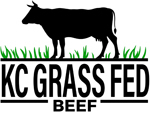 Regenerative ranching is a new term for the way cows grazed before we had compacted food lots. Some other terms that are close to regenerative ranching include adaptive grazing, rotational grazing, organic ranching, and holistic management.
Regenerative ranching is a new term for the way cows grazed before we had compacted food lots. Some other terms that are close to regenerative ranching include adaptive grazing, rotational grazing, organic ranching, and holistic management.
Regenerative ranching involves carefully controlling livestock density and how long a particular pasture or paddock is grazed on at one time. Rather than following a set protocol, we learn to make changes according to current conditions, feedback from the environment, and specific goals and objectives.
In the end regenerative ranching improves the health of our soil, the health of our cows and decreases the greenhouse gases.
Our Commitment
We are committed to the environment, our cattle, the land we own and the customers that pay for the meat we provide. Part of that commitment involves regenerative ranching and the following benefits it provides.
- producing a healthy and natural food source
- storing more rainwater in our pastures
- improving the grass density in our pastures
- maintaining a diverse plant and microbial community in our pastures that can transform our soil into a magnet that collects greenhouse gases
Regenerative ranching is one of the things that support our overall commitment. To see the rest of the things we do to create a better environment for our land, our cows and this Earth, look how we naturally raise our grass-fed beef.
Regenerative Ranching Goal
 To provide a nutritious natural food source for our cows while leaving a grass layer to absorb greenhouse gases. The cows are rotated daily to a small area called a paddock. There they eat grass that has rested for over 30 days.
To provide a nutritious natural food source for our cows while leaving a grass layer to absorb greenhouse gases. The cows are rotated daily to a small area called a paddock. There they eat grass that has rested for over 30 days.
They eat the grass to a partial level (rather than all the way to the ground), disturb the soil lightly with their hooves (which mixes their manure and urine into the top soil), and then move on to the next paddock.
This approach to raising grazing animals actually improves the condition of the soil rather than damaging it. A significant amount of carbon can be consumed in the grass because the land is always kept covered and the roots and soil microbiomes are nourished and left mostly undisturbed.

